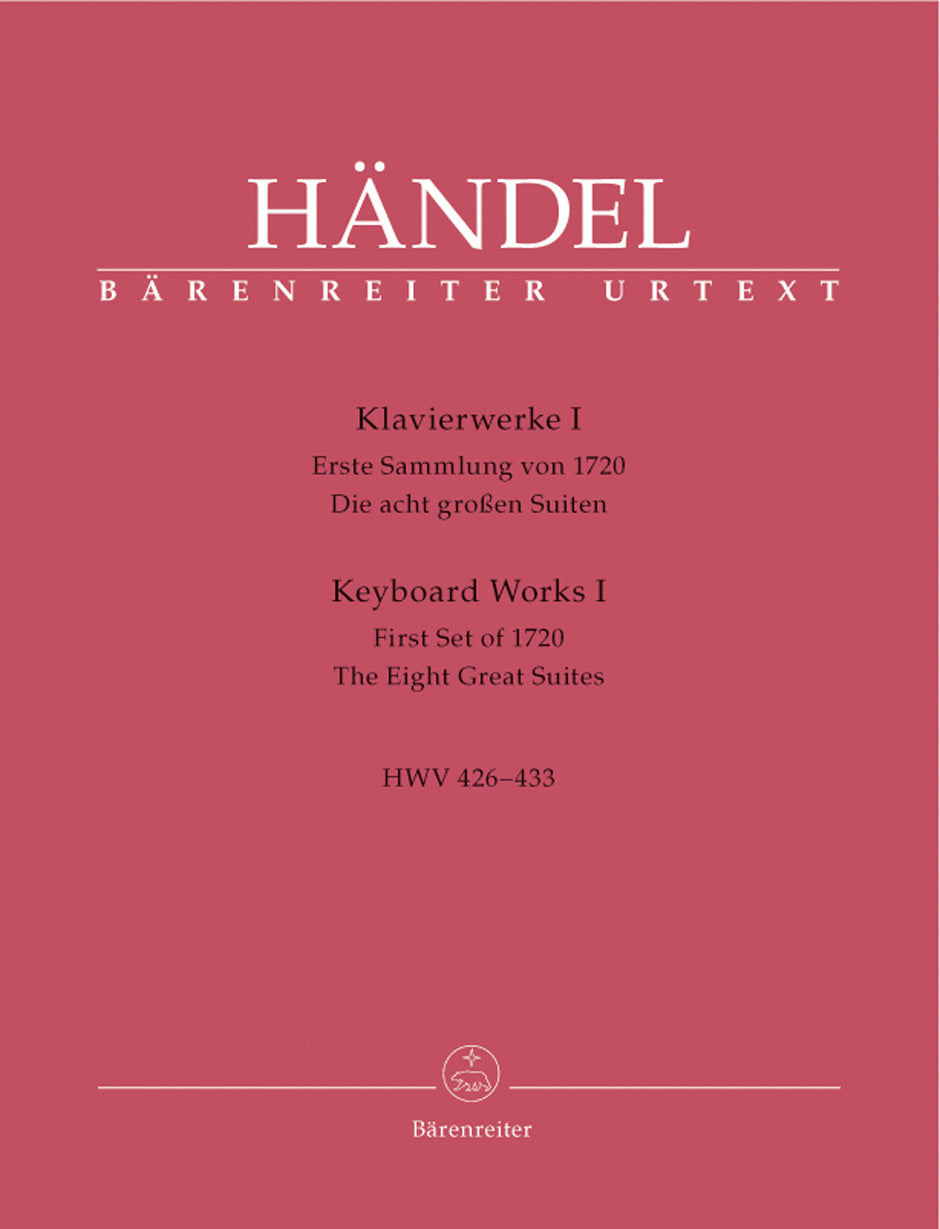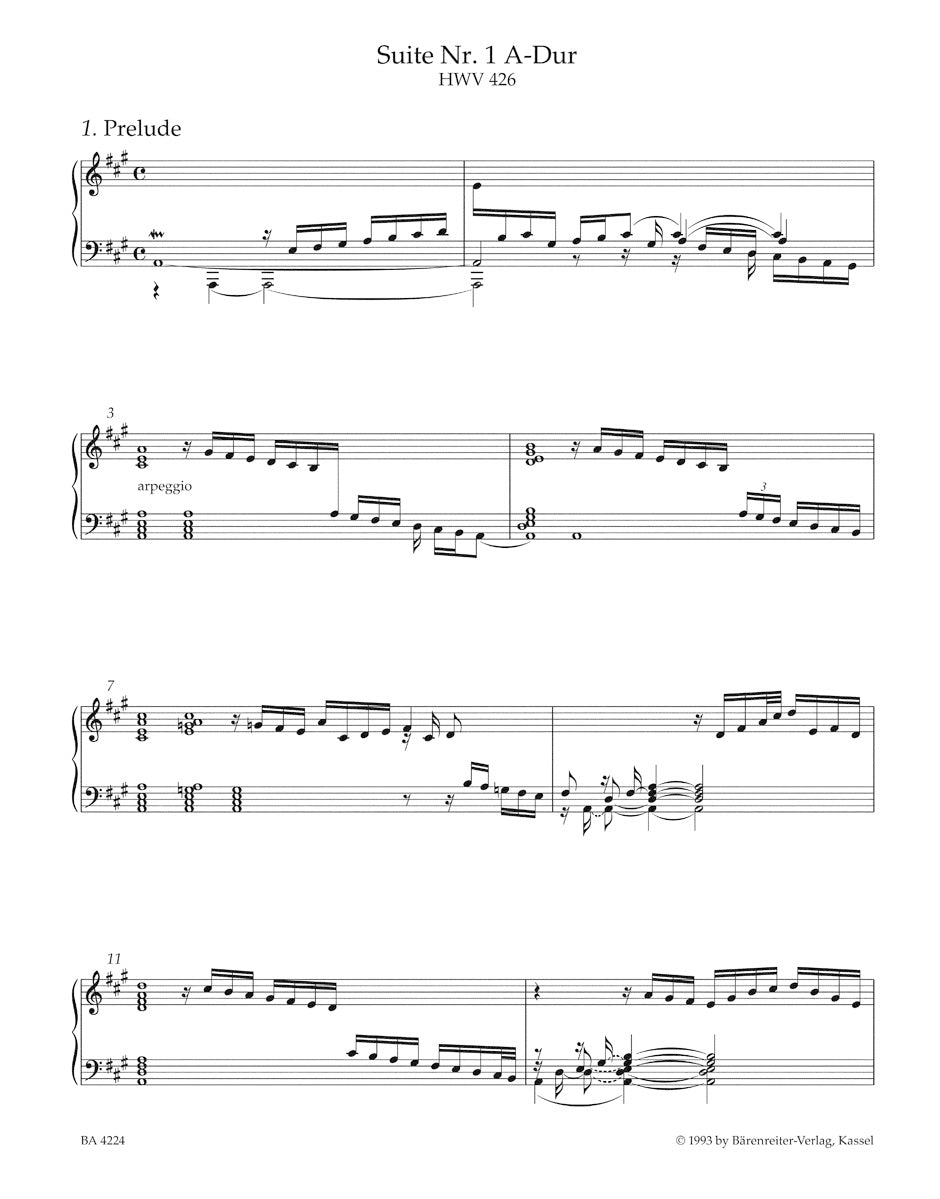Handel: Keyboard Works - Volume 1 (HWV 426-433)
The Eight Great Suites
In stock and typically ships within 1 business day.
- Composer: George Frideric Handel (1685-1759)
- Editors: Rudolf Steglich, Terence Best
- Instrumentation: Piano
- ISMN:
- Size: 9.6 x 12.2 inches
- Pages: 113
- Urtext / Critical Edition
Description
Throughout his life Handel was famous as a brilliant performer on keyboard instruments, and he began composing for them in his youth: his early training under Zachow included the study of the most important 17th-century German composers for the keyboard, and their influence can be seen in the harpsichord music which he had written by the time he left Hamburg for Italy in 1706. He seems to have taken it up again only after he settled in England in 1712, and during the next few years he wrote a large number of harpsichord works, with a peak about 1717, when he was becoming involved with the music at Cannons.
Apparently Handel was in no hurry to publish these compositions, and manuscript copies were made for friends and patrons. The primary source for our text is the third impression of the Cluer edition. As well as the Walsh, le Cène and Leclerc editions there are important manuscript sources, including some autographs, which give much additional information concerning the text.
Works:
- Suite in A Major, HWV 426
- Suite in F Major, HWV 427
- Suite in D Minor, HWV 428
- Suite in E Minor, HWV 429
- Suite in E Major, HWV 430
- Suite in F-sharp Minor, HWV 431
- Suite in G Minor, HWV 432
- Suite in F Minor, HWV 433
Publishers use a lot of words to describe what they sell, and we know it can be confusing. We've tried to be as clear as possible to make sure you get exactly what you are looking for. Below are descriptions of the terms that we use to describe the various formats that music often comes in.
Choral Score
A score for vocalists that only contains the vocal lines. The instrumental parts are not there for reference. Generally, cheaper than a vocal score and requires multiple copies for purchase.
Facsimile
Reproductions of the original hand-written scores from the composer.
Full Score
For ensemble music, this indicates that the edition contains all parts on a single system (there are not separate parts for each player). In larger ensembles, this is for the conductor.
Hardcover
Hardbound. Generally either linen-covered or half-leather.
Orchestral Parts
Similar to a wind set, this is a collection of parts. In the case of strings, the numbers listed are the number of copies included, though generally these are available individually (often with minimum quantities required).
Paperback
When publishers offer multiple bindings (e.g. hardcover) or study scores, this is the "standard" version. If you're planning to play the music, this is probably what you want.
Performance / Playing Score
A score of the music containing all parts on one system, intended for players to share. There are not separate parts for each player.
Set of Parts
For ensemble music, this indicates that there are separate individual parts for each player.
Solo Part with Piano Reduction
For solo pieces with orchestra, this is a version that contains a piano reduction of the orchestra parts. For piano pieces, two copies are typically needed for performance.
Study Score
A small (think choral size) copy of the complete score meant for studying, and not playing. They make great add-ons when learning concertos and small chamber works.
Vocal Score
A score prepared for vocalists that includes the piano/organ part or a reduction of the instrumental parts.
Wind Set
For orchestral music, this is a collection of wind and percussion parts. The specific quantities of each instrument are notated.
With Audio
In addition to the printed music, the edition contains recordings of the pieces. This may be an included CD, or access to files on the internet.
With / Without Fingering (Markings)
Some publishers prepare two copies - a pure Urtext edition that includes no fingering (or bowing) suggestions and a lightly edited version that includes a minimal number of editorial markings.





